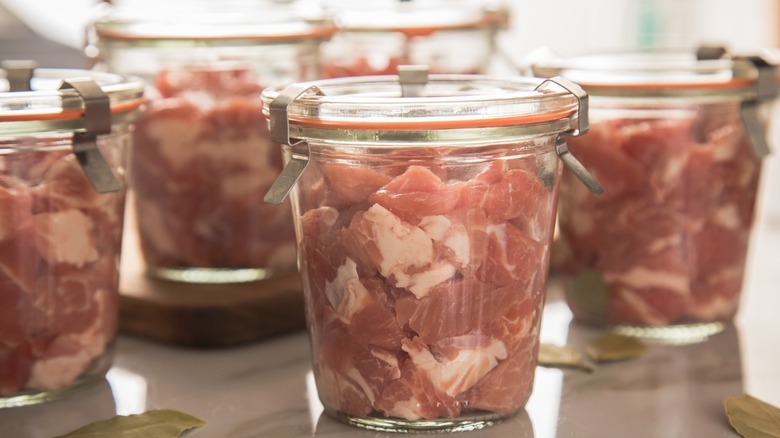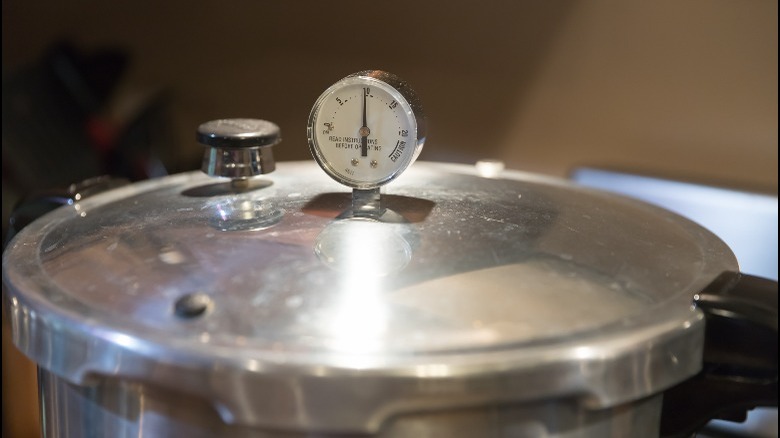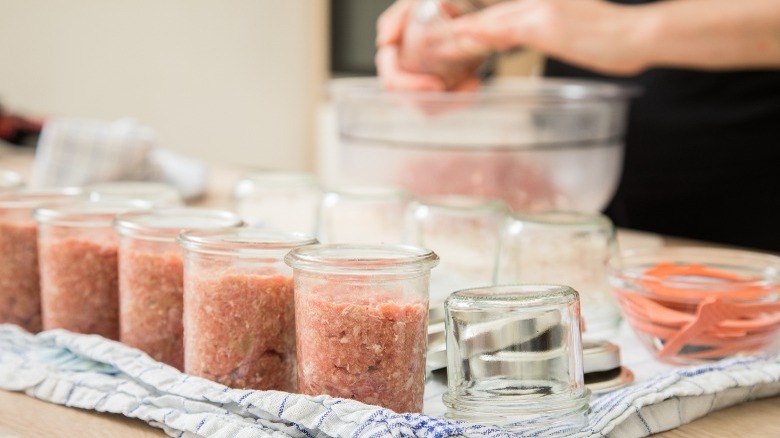The Only Safe Method For Canning Meat At Home
Although canning is an excellent method of preserving food, contamination is one of the biggest safety concerns. Granted, per the National Center for Home Food Preservation, canning prevents food from going bad by stopping enzyme activity, keeping away oxygen, and maintaining optimum moisture levels. It also prevents the growth of disease-causing microorganisms.
That being said, foodborne botulism is certainly one disease to be wary of. Though rare, botulism is a severe and potentially fatal disease caused by toxins produced by the bacterium Clostridium botulinum. In fact, according to the Centers for Disease Control and Prevention, when it comes to botulism outbreaks in the United States, home-canned vegetables are at the top of the list.
So, how do you ensure your home-canned meat doesn't harm or maybe even kill you? Of the three safe canning methods for preserving food at home – pressure canner, boiling water bath, and atmospheric steam canner — only one is 100% safe for meat.
Pressure canning your meat
Your ideal canning method is highly dependent on the food you want to preserve, especially its acidity level. Pressure canning is the go-to method for low-acid foods, including meat (and most fresh vegetables). So, whether you're processing red meat, poultry, or seafood, using a pressure canner ensures you can safely enjoy your deliciously soft meats for months.
The reason pressure canning is recommended for meat preservation at home is the exceptionally high processing temperatures. At 240 degrees Fahrenheit, the deadly Clostridium bacteria that cause botulism are entirely destroyed together with their spores, per the National Center for Home Food Preservation.
In contrast, steam canners and the boiling water bath only reach 212 degrees Fahrenheit. This boiling water temperature only kills the vegetative bacteria cells leaving behind the spores. However, because of the high-acid level of foods canned using a boiling water bath, the acid can destroy the spores hence eliminating the risk of botulism.
Follow professional guidelines for safe meat canning
It's not enough to just use a pressure canner to process your meat; you've got to follow the correct procedure to guarantee success and food safety. The USDA Complete Guide to Home Canning is the recommended manual for all things canning.
Regarding red meats and poultry, the guide suggests using either a hot or raw pack. A hot pack requires pre-cooking the meat before canning, while in a raw pack, meat is put in jars while still raw. The choice between preparing a hot or raw pack is totally up to you, except for ground meat. Ground or chopped meat should always be pre-cooked before canning to prevent it from clumping together and hindering the free flow of heat within the jar during processing. However, note that in both hot and raw packs, the canned meat is considered fully cooked and ready to eat after the pressure canning process.
So go ahead and confidently pressure can your selection of meats, knowing you and your family will consume safe and healthy meals.


